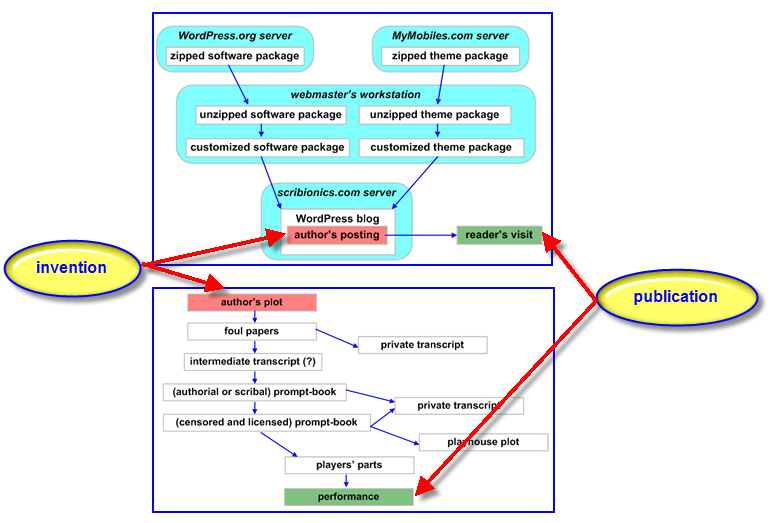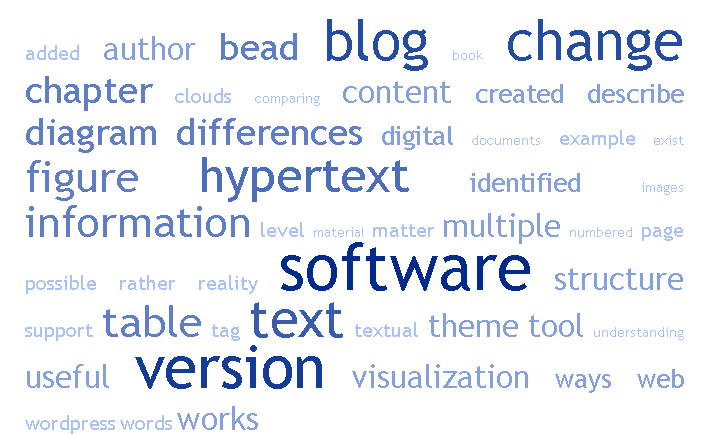Movement and Containment in Texts and Hypertexts
Visit the home page for an abstract, the full Table of Contents, and a link to
the full text of my dissertation.
- Textual Permutations in Blog Publication: Locating Non-Authorial Participants
- Software Creates by Describing
- Software Is Language Designed to Change: Versioning, About, README
- Software Is Language Surrounded by Language
- Software Is Made of Words but Explained by Pictures
- Describing Intentional Change in Informational Works
- Visualizing Revisions of Procedural Information: All Versions Influence All Versions
- Visualizing Versioning of Paper-Like Texts
- Hypothesizing Versions
Textual Permutations in Blog Publication: Locating Non-Authorial Participants
After an author invents an idea, some time may elapse before the idea is available to consumers. Or maybe not: here, I compare the distances between invention and publication for two kinds of texts:
- a modern digital blog
(summarizing the steps I followed to create, customize, and post content to a blog hosted at scribionics.com) - a Renaissance manuscript drama
(summarizing the steps outlined in William Shakespeare: A Textual Companion, by Stanley Wells and Gary Taylor )

I think this demonstrates a key shift, differentiating hypertext from text: unacknowledged behind-the-scenes steps and non-authorial participants are not new; what is new is that non-authorial participants now routinely make their text-shaping contributions before, not after, the author invents an idea.
